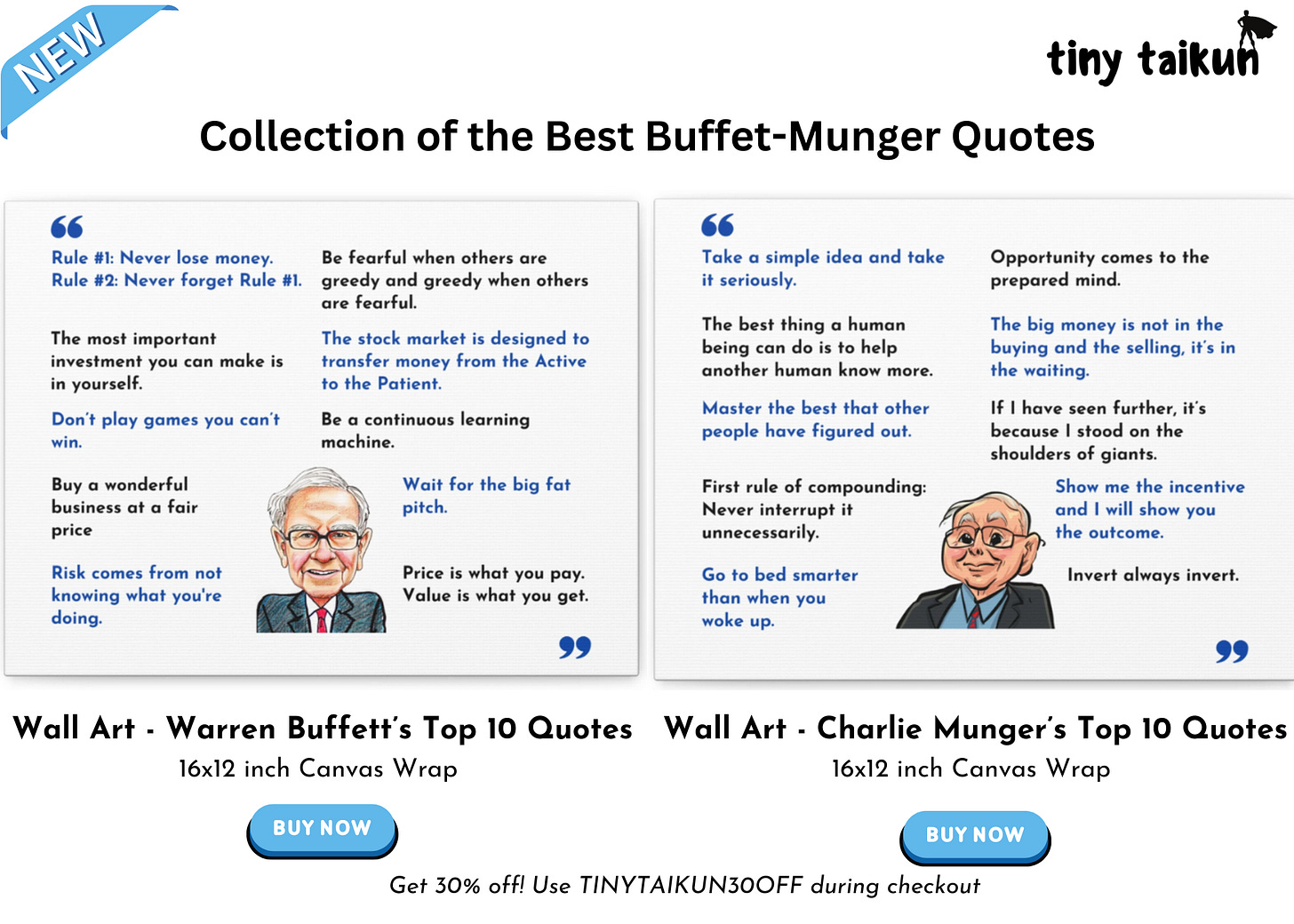Fighting Inertia: The Crucial First Turn of the Business Flywheel
The Jim Collins’ flywheel, Amazon’s legendary flywheel and my musings on pushing the flywheel for the first time.
Almost three years ago, I read an incredible book called 'Good to Great' by Jim Collins. He uses an analogy of a flywheel to describe what it's like to gain momentum in business.
Below is an excerpt from the book. It’s a bit lengthy, but it paints a good picture.
Picture a huge, heavy flywheel—a massive metal disk mounted horizontally on an axle, about 30 feet in diameter, 2 feet thick, and weighing about 5,000 pounds. Now imagine that your task is to get the flywheel rotating on the axle as fast and long as possible. Pushing with great effort, you get the flywheel to inch forward, moving almost imperceptibly at first. You keep pushing and, after two or three hours of persistent effort, you get the flywheel to complete one entire turn. You keep pushing, and the flywheel begins to move a bit faster, and with continued great effort, you move it around a second rotation. You keep pushing in a consistent direction. Three turns ... four ... five ... six ... the flywheel builds up speed ... seven ... eight ... you keep pushing ... nine ... ten ... it builds momentum ... eleven ... twelve ... moving faster with each turn ... twenty ... thirty ... fifty ... a hundred.
Then, at some point—breakthrough! The momentum of the thing kicks in in your favor, hurling the flywheel forward, turn after turn ... whoosh! ... its own heavy weight working for you. You’re pushing no harder than during the first rotation, but the flywheel goes faster and faster. Each turn of the flywheel builds upon work done earlier, compounding your investment of effort. A thousand times faster, then ten thousand, then a hundred thousand. The huge heavy disk flies forward, with almost unstoppable momentum.
Now suppose someone came along and asked, “What was the one big push that caused this thing to go so fast?” You wouldn’t be able to answer; it’s just a nonsensical question. Was it the first push? The second? The fifth? The hundredth? No! It was all of them added together in an overall accumulation of effort applied in a consistent direction. Some pushes may have been bigger than others, but any single heave—no matter how large—reflects a small fraction of the entire cumulative effect upon the flywheel.
When it comes to flywheels, Amazon has built one of the best and biggest flywheels that exist today. Jeff Bezos drew a version of the below flywheel on a paper napkin during his early days as an entrepreneur.
The Amazon flywheel is clear - lower prices lead to more customer visits. More customers increase the volume of sales and attract more third-party sellers. That, in turn, allows Amazon to get more out of the fixed costs of their fulfillment centers and web servers. This greater efficiency then enables it to lower prices further, which connects back to more customers!
Jeff Bezos relentlessly focused on reducing prices and keeping them low, because he knew that customers love lower prices, which means they will keep coming back. Even today, we can see the same flywheel being applied to their business. Clear thinking and relentless powering through its strategy led Bezos and Amazon to unparalleled success, at scale.
As an investor, sitting in my comfortable chair, it sounded simple enough and made total sense. My takeaways back then were:
Great businesses figure out what their flywheel is and relentlessly focus on pushing that flywheel
Great businesses aren’t built on a single push or effort. Instead, they are the result of a series of steps that compound over time. Each one builds upon previous work to create superior results while unlocking new opportunities for the future.
Building momentum for a business takes a long time, but once momentum builds, good things start to happen.
Currently, I'm trying to be an entrepreneur and launch my business, a small e-commerce store called Tiny Taikun. And an obvious question came to mind, what's my flywheel?
To be honest I struggled to come up with a good answer. The flywheel's not fully formed yet and looks like a bunch of squiggly lines rather than a neat circle, At the moment, it looks like this - more products, more choice to customers potentially attracts new customers, and more sales and reviews from these satisfied customers informs the Etsy algorithm that Tiny Taikun merchandise is of interest to people. More social media engagement, more articles, more networking to create my personal brand hopefully gives more visibility to my store.
Having said that, it’s time for a shameless plug LOL.
This post is sponsored by Tiny Taikun
Visit us at https://tinytaikun.etsy.com
Running an online business means that I'm having to learn a bunch of skills that I was never exposed to - designing, marketing, sales, SEO, pricing, customer service, etc. The learning curve is incredibly steep, it's like trying to run a marathon with zero experience and practice.
And I am finding that first turn of the flywheel to be a hard, painful, emotionally taxing grind. I feel like I willingly taking my emotions on a roller coaster ride every single day. The ‘highs’ are the rare rush of adrenaline when I get a sale, and the lows are when no one turns up to the store for days. The ‘low’ days significantly outweigh the number of ‘high’ days. And as I wander in this valley of despair, I hear the voice of the devil in my head say things like ‘you are an imposter!' or ‘do you think this is ever going to work?'
Tiny Taikun is a baby, in baby terms it's still fresh (0-3 months). In business terms it's still finding it's 'product market fit'. I have to keep reminding myself that this is just the beginning and good things might happen if I keep at it for a long enough period of time.
I'm trying to get myself to focus on the input and the consistency of the input, and ignore the output. The metrics I am setting for myself are to build new merchandise and publish regularly on social media. If I keep at it for a year, I will potentially have 300+ items in my store and at least 300 social media posts. And if one of these items picks it, it might propel the other items too and hopefully help to move that huge flywheel ever so slightly!
The concept of the flywheel is helpful, because I am asking myself questions like “Do I know what my flywheel is? Are my efforts being directed towards pushing that flywheel”.
It's also empowering, because it tells me that every action I take in my business is pushing that flywheel forward. It means that the actions which didn't yield an immediate result were not wasted effort, and are potentially pushing that flywheel forward, one millimeter at a time.
And when I am in the trenches of my business and going through those ‘‘lows’, the flywheel lens helps me to step away from the minutiae and focus on the bigger picture.
If you are an entrepreneur, keep pushing that flywheel. Often times, consistent efforts are more important than output/results. Similar to investing, gratification seems to come on a delayed basis in business. That's what I tell myself today to keep going.
As Jeff Bezos said in a recent podcast interview with Lex Fridman, “entrepreneurs have to contend with this duality of having complete, utter conviction that their business will be successful, but also knowing the fact that most businesses fail!”
What's been your experience as a founder? What does your flywheel look like and how do you use it in your business? Would love to hear your thoughts. Thank you for reading.







